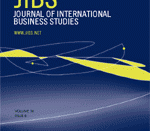Companies that do business in expanding industries must grow to survive. Continuing growth means increasing sales, and a chance to take advantage of the experience curve to reduce the per-unit cost of products sold, thereby increasing profits (Wheelen et al, 2000).
A corporation can grow internally or it can grow externally. Nowadays, growth usually has international implications. A corporation can select from several strategic options the most appropriate method for it to use in entering a foreign market. There are six methods of entering a foreign market; exporting, licensing, franchising, joint ventures, turnkey projects, and wholly owned subsidiaries. Exporting is becoming increasingly popular especially for small businesses because of modern communication, transportation technologies, and gradual decline in trade barriers.
The international market is normally so much larger than the firm's domestic market that exporting is nearly always a way to increase the revenue and profit base of a company. By expanding the size of the market, exporting can enable a firm to achieve economies of scale, thereby lowering its unit cost (Hill, 2006).
Firms that do not export often lose out on significant opportunities for growth and cost reduction (Pope, 2002).
Exporting is sending goods and services from one country to another (Daniels, et al 2006). According to Campbell (et al, 2002), it is the transfer of goods (services) across national borders from the home production facilities.
As said before, exporting is one of the methods to enter foreign markets and it has become a growing trend for companies which are large and small. There are many specific goals by doing this, but the main reason is to guarantee the long-term sustained growth for their business. But like other methods to enter foreign markets, it has advantages and disadvantages. According to Johnson (et al, 2005) and Hill (2006), these can...


